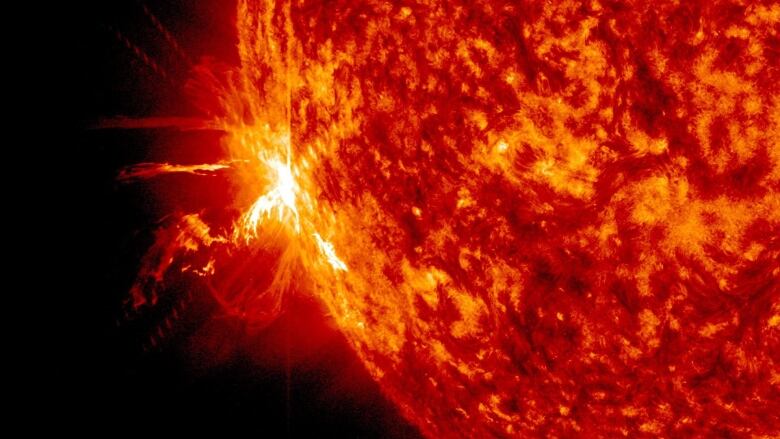Aurora borealis could illuminate New Year's Eve sky across Canada
Solar storm could spawn swirling show of northern lights

A recent strong solar storm is expected togiveCanadians across the country a specialNew Year's Eve northern lights show.
The aurora's swirling colours may light up night skies as far south as 50 degrees geomagnetic latitude,says the U.S. National Oceanic and Atmospheric Administration. This means that cities along the Canada-U.S. border and farther north might get a chance to see the display.
- Aurora borealis 'fabulous' this year, say northern sky watchers
- PHOTOS |Aurora borealis illuminate the night sky
The agency says people in places as far south as Oregon and Illinois could also see the lights.
The aurora borealis is most commonly seen in high latitudes.
"The effects are strongest around the magnetic poles of the Earth, with the magnetic North Pole being in northern Canada,"said Piet Martens, a physicist at Georgia State University.
Because of this, people who live in the territories and northern regions of some provinces are often treated to beautiful aurora displays. But it's rare that the northern lights are on view in Canada's south.
Geomagnetic stormsare caused by the sun. Martens said, and this particular storm is being caused by a coronal mass ejection (CME) that happened Dec. 28. A CME is an eruption of a magnetic cloud from the sun that takes off into space and sometimes hits Earth, as it will this time. It takes some time for the effects to be felt on Earth, which is why wewon't see anything unusualuntil Dec. 31.

CMEs are typically coupled with solar flares, which also happened this time. A solar flare isa "burst of emission of X-rays, extreme ultraviolet rays and sometimes even gamma rays from a location on the sun,"said Martens.
And "the larger the flare, the larger and faster the CME,"he added.
People who want to increase their chances of seeing the lights should try to get away from light pollution, look north, and hope for clear skies.
And if you miss out tonight and tomorrow, the space weather agency is predicting an even stronger storm on Jan. 2.
Risk of power outage
A possible downside to the display is thatmassive solar storms can disable satellites and affect radio signals. Solar surges can also knock out power on Earth. But the risk is low.
"Power grid operators have gotten better at anticipating and preventing negative impacts from geomagnetic storms," said Martens.
He added that GPS systems could be thrown off by a "couple of metres,"but it's unlikely that cellphones in general will be affected.












_(720p).jpg)


 OFFICIAL HD MUSIC VIDEO.jpg)
.jpg)



























































































